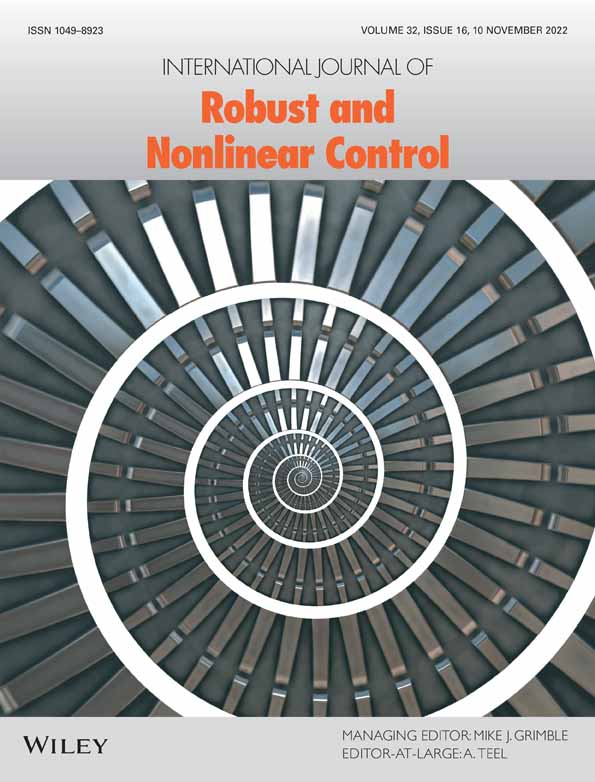Synchronization control for multiple Euler–Lagrange systems in leader–follower framework under switching and event-based communications
Funding information: Ministry of Science and Technology, Taiwan, Grant/Award Number: MOST 111-2636-E-006-004
Abstract
Synchronization control of network robotic systems has attracted numerous researches as the development of applying multi-robotic systems in manufacturing. Despite the practical issues of networked systems such as dynamic connection and limited bandwidth, most of the previous results have been developed under the assumption that each robot knows the system desired trajectory, the interconnections between robots are fixed, and periodic communications. Thus, in this article, we study the synchronization control for networked robotic systems, modeled by Euler–Lagrange equation, under more general cases such that only a subgroup of the robots knows the desired trajectory and the communication between robots are switched. Particularly, first, we utilize an adaptive distributed observer algorithm for each robot to estimate the system trajectory (or the leader dynamics). Then the observer results are synthesized in the proposed control algorithm to enhance the synchronization of the robots. In addition, an event-based algorithm is taken into account to reduce communication in case of no switching topology. Simulations with a network of four manipulators show that under the proposed control algorithms the synchronization of follower robots is achieved faster comparing with the relevant results in the literature.
CONFLICT OF INTEREST
The authors declare no potential conflict of interest.
Open Research
DATA AVAILABILITY STATEMENT
Data sharing is not applicable to this article as no datasets were generated or analyzed during the current study.




